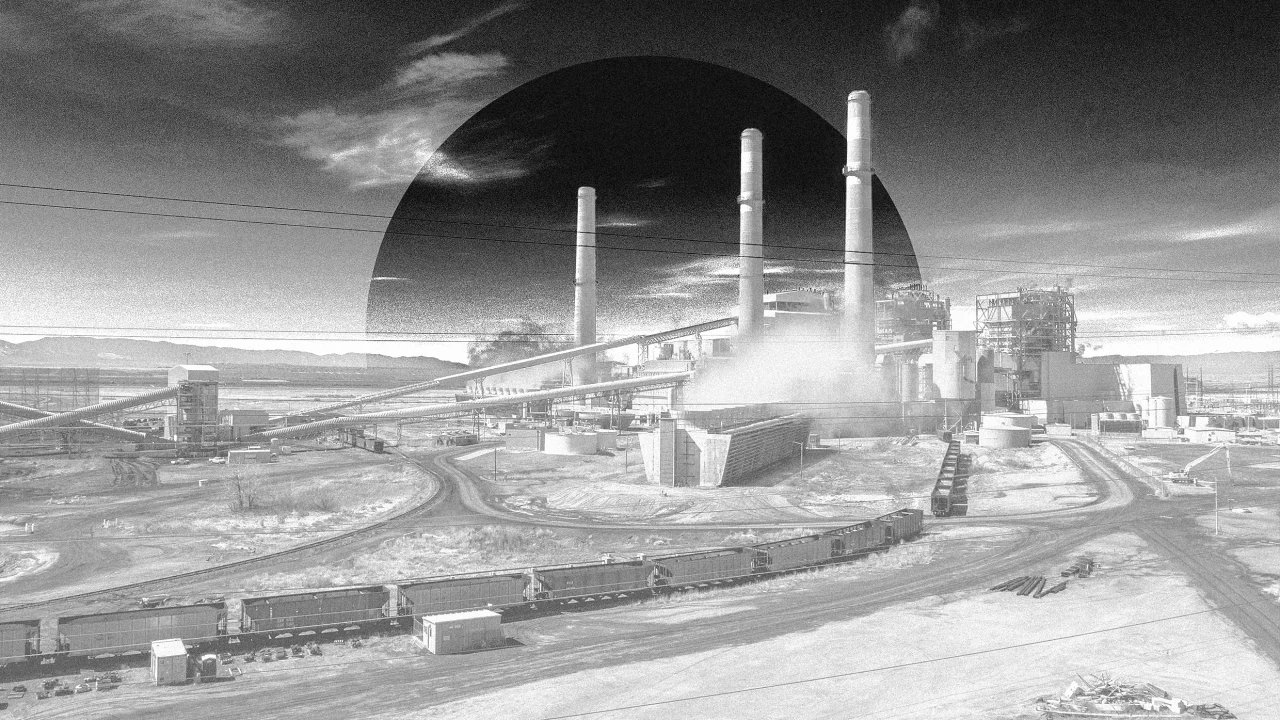Coal power keeps getting more expensive—and that means higher electricity bills for Americans
Coal power is a dirtier energy source than renewables like wind and solar. But even for those Americans who don’t care about climate, it’s also a more expensive energy source—and the economics of using it as a power source just keep getting worse. As President Donald Trump tries to bolster the coal industry by ordering shuttered coal power plants to reopen, that means everyday Americans are likely to see their electricity bills spike. Coal power was 28% more expensive in 2024 than it was in 2021, according to a new analysis by Energy Innovation, a San Francisco-based climate research firm. That means the cost of generating power with coal is rising faster than inflation, which increased by 16% over the same time period. The economics of coal have been bad for some time. A 2023 Energy Innovation report found that 99% of the existing coal plants across the U.S. are more expensive to run than to replace with renewables like wind, solar, or energy storage. In the past four years alone, more than 100 coal-fired units have closed for economic reasons. And yet Trump has ordered coal plants set for retirement to keep operating past their planned shut-down dates. The J.H. Campbell power plant in Michigan, for example, was scheduled to close May 31, but Trump ordered it to remain open. These orders to prop up the coal industry “ignore the economic fundamentals underpinning coal’s decline,” Energy Innovation’s most recent report reads. And that affects Americans across the country: “If coal plants are being kept online that would otherwise be retired, the cost of running those plants is going to be passed on to the electricity consumer,” says Michelle Solomon, a manager of the electricity program at the firm and the report’s author Electricity rates are on the rise across the country, but states that rely heavily on coal, like West Virginia and Kentucky, are seeing even faster increases. Between 2021 and 2024—as 95% of the country’s coal power plants have gotten more expensive to run—electricity rates in West Virginia have gone up 24%. (Since 2022, residential electricity prices have increased 13% on average across the country.) Coal is getting more expensive for a few reasons. In many areas, easy access to coal is gone, because it’s already been mined for so long. That means it gets more expensive to continue mining for coal, Solomon says. Coal plants are also aging, and so they’re more costly to maintain. Per Energy Innovation, the average age of U.S. coal plants is 43 years old, though multiple plants are pushing 70. These factors also affect Trump’s decision to keep operating coal plants that were set for retirement. Utilities have already planned for those plants to shutter, meaning they have likely burned down their stockpiles of coal and may have even deferred maintenance, since they wouldn’t be kept running. Rushing to buy coal or scrambling to complete last-minute maintenance could add even more costs. Renewables have seen some price volatility with inflation too, Solomon says, and this most recent Energy Innovation report didn’t update renewables analysis. But it’s clear the coal fleet is getting significantly more expensive. And given that coal has already been more expensive than renewables for years, “it’s fair to say that the economics [of coal] continue to get worse compared to renewables,” she adds. It’s hard to say exactly how much rising coal prices will affect someone’s electricity bills, especially when it comes to keeping open planned-for-retirement coal plants. But typically, the costs of operating these plants are passed on to consumers, Solomon says. “The coal fleet, because it’s more expensive than inflation, is putting inflationary pressure on U.S. electricity prices. “So if the administration’s goal is to make energy cheaper and to bring down inflation, keeping old coal plants running is completely opposite to what they should be doing,” Solomon says.

Coal power is a dirtier energy source than renewables like wind and solar. But even for those Americans who don’t care about climate, it’s also a more expensive energy source—and the economics of using it as a power source just keep getting worse.
As President Donald Trump tries to bolster the coal industry by ordering shuttered coal power plants to reopen, that means everyday Americans are likely to see their electricity bills spike.
Coal power was 28% more expensive in 2024 than it was in 2021, according to a new analysis by Energy Innovation, a San Francisco-based climate research firm. That means the cost of generating power with coal is rising faster than inflation, which increased by 16% over the same time period.
The economics of coal have been bad for some time. A 2023 Energy Innovation report found that 99% of the existing coal plants across the U.S. are more expensive to run than to replace with renewables like wind, solar, or energy storage.
In the past four years alone, more than 100 coal-fired units have closed for economic reasons. And yet Trump has ordered coal plants set for retirement to keep operating past their planned shut-down dates. The J.H. Campbell power plant in Michigan, for example, was scheduled to close May 31, but Trump ordered it to remain open.
These orders to prop up the coal industry “ignore the economic fundamentals underpinning coal’s decline,” Energy Innovation’s most recent report reads. And that affects Americans across the country: “If coal plants are being kept online that would otherwise be retired, the cost of running those plants is going to be passed on to the electricity consumer,” says Michelle Solomon, a manager of the electricity program at the firm and the report’s author
Electricity rates are on the rise across the country, but states that rely heavily on coal, like West Virginia and Kentucky, are seeing even faster increases. Between 2021 and 2024—as 95% of the country’s coal power plants have gotten more expensive to run—electricity rates in West Virginia have gone up 24%. (Since 2022, residential electricity prices have increased 13% on average across the country.)
Coal is getting more expensive for a few reasons. In many areas, easy access to coal is gone, because it’s already been mined for so long. That means it gets more expensive to continue mining for coal, Solomon says. Coal plants are also aging, and so they’re more costly to maintain. Per Energy Innovation, the average age of U.S. coal plants is 43 years old, though multiple plants are pushing 70.
These factors also affect Trump’s decision to keep operating coal plants that were set for retirement. Utilities have already planned for those plants to shutter, meaning they have likely burned down their stockpiles of coal and may have even deferred maintenance, since they wouldn’t be kept running. Rushing to buy coal or scrambling to complete last-minute maintenance could add even more costs.
Renewables have seen some price volatility with inflation too, Solomon says, and this most recent Energy Innovation report didn’t update renewables analysis. But it’s clear the coal fleet is getting significantly more expensive. And given that coal has already been more expensive than renewables for years, “it’s fair to say that the economics [of coal] continue to get worse compared to renewables,” she adds.
It’s hard to say exactly how much rising coal prices will affect someone’s electricity bills, especially when it comes to keeping open planned-for-retirement coal plants. But typically, the costs of operating these plants are passed on to consumers, Solomon says. “The coal fleet, because it’s more expensive than inflation, is putting inflationary pressure on U.S. electricity prices.
“So if the administration’s goal is to make energy cheaper and to bring down inflation, keeping old coal plants running is completely opposite to what they should be doing,” Solomon says.

















































































































































